Before I get to the museum, this is the flat I’m staying in in Aberdeen. $385 for 7 days. I don’t want anyone to get the mistaken idea that I’m rolling in the dough or anything. I wasn’t when I owned RiverView and much less so now. Since a room is only a place to sleep and clean up, I need nothing special. Ensuite if possible but shared is Ok. Good Wifi is helpful for posting and keeping up with Colbert & Meyers. When I can get a whole place like the static caravan or a flat, I can cook many meals for the cost of one dinner out. Public transport and not being afraid to hoof it when the dogs are quiet vs a car hire (so far in previous car hires in 2003, 05 & 07, I have 2 left front hubcaps and 2 passenger mirrors busted to my credit! It’s not easy negotiating traffic alone. Especially if people park on the sidewalk where you are not expecting a car) otherwise I couldn’t do this for more than a couple weeks. And flights. I used to take the Boston to Europe via Iceland method which is pretty inexpensive but this time I used Norwegian Air. They just announced a one-way from Providence, Hartford and someplace north of NYC to Edinburgh (Edinbra if you don’t want to be corrected) for $139/ around £100 one way plus luggage. And that is direct! If one can get a roundtrip for about $300, why aren’t you here? Come join me and we can share a flat.
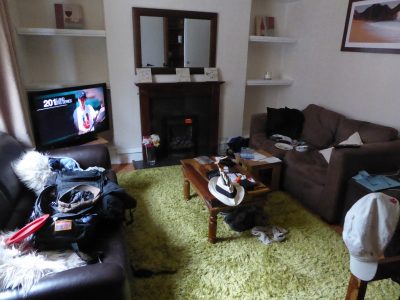
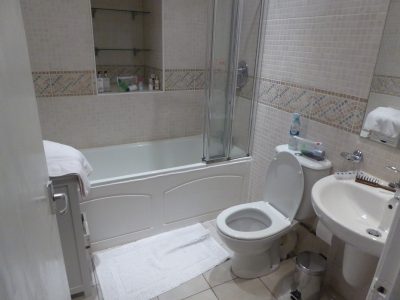
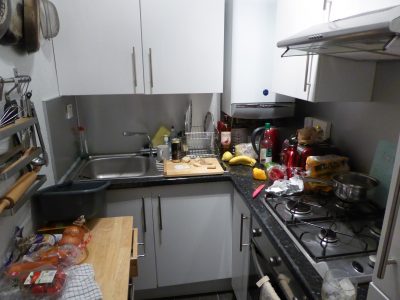
Aberdeen is a city that has always been connected to the sea whether through fish or oil and the museum reflects that. Only a two hour visit and, like most UK museums, free.
Naturally there a a lot of ship models and 1/2 hulls like this Such trader.
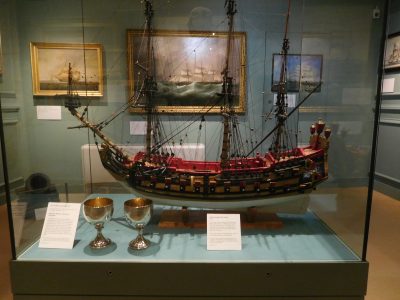
And Herring trawler
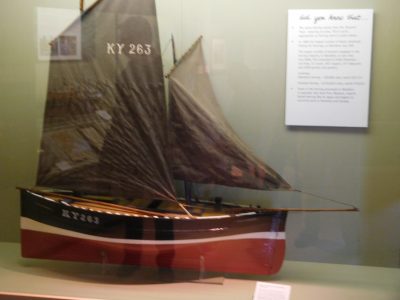
And copper bottoms reduce marine growth that slows ships down
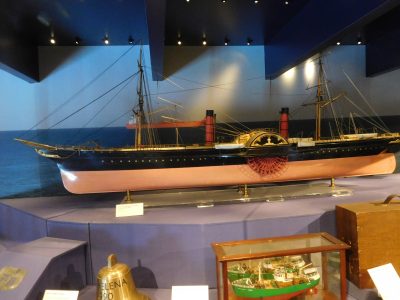
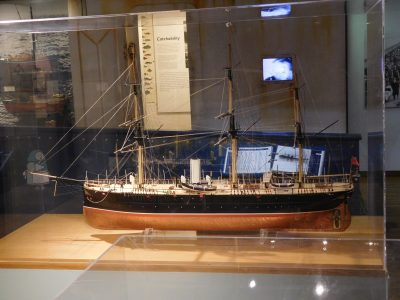
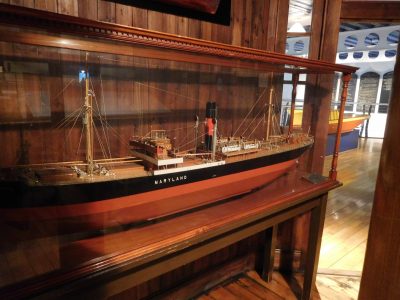
And a warship
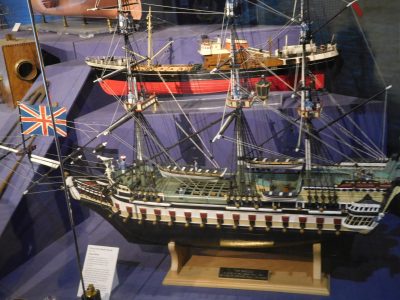
This mortar was retrofitted to throw a line from shore to a ship in distress. Those onboard would haul the line in with a larger one attached and then rig up a system to get themselves on land.
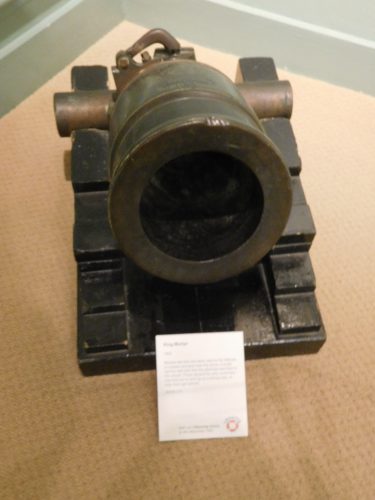
This harpoon gun was used for the same purpose
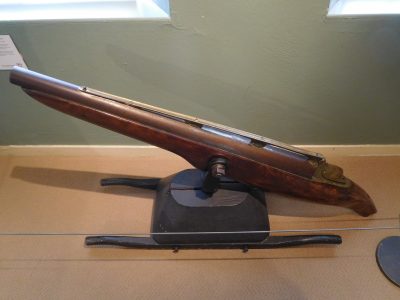
Model of oil platform
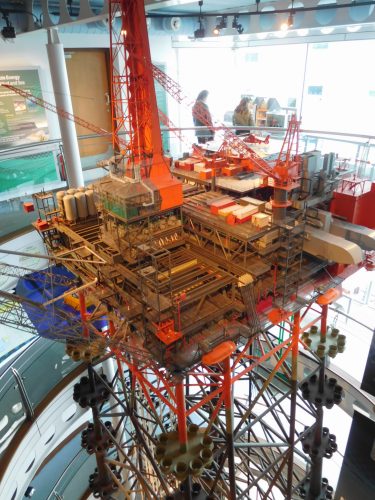
The Murchison Oil Platform began producing oil in 1980. Located 12o miles NE of the Shetlands, it sits on the sea bed 500ft below on 32 piles weighing 250 tons each. It is designed to withstand 150 mph winds and 100ft waves. Under the surface it connect to 25 individual wells that were drilled down up to 2 miles and once in full operation produced 150,000 barrels a day eventually producing over 400,000,000 barrels. It has now been decommissioned and most of it except the footings has been returned to land for recycling.
And these are drill bits used to dig the wells.
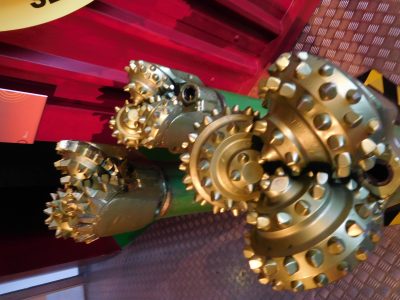
Platforms require upkeep and to do so, depending upon the depth, there are various ways to do so.
A pressure suit
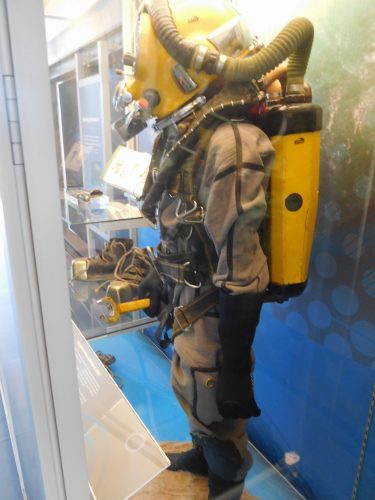
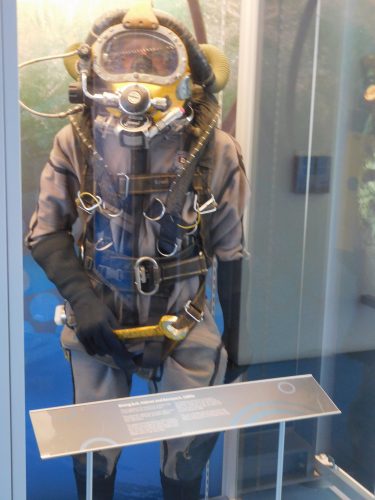
A deep water pressure suit that acted like one man sub.
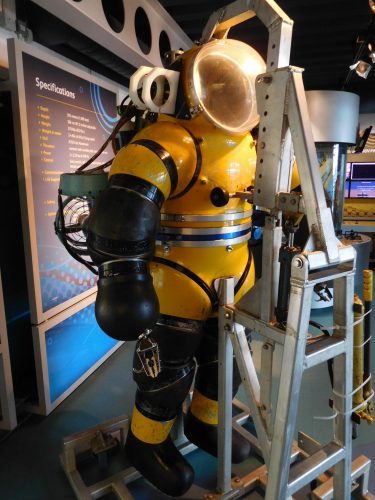
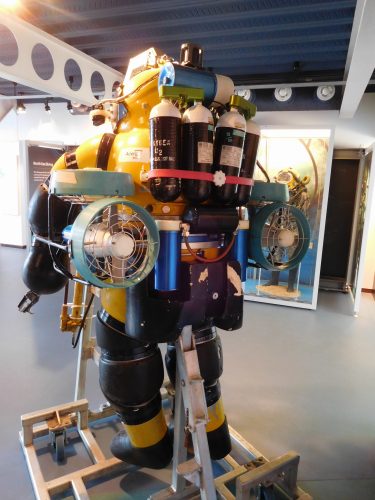
Or an unmanned rover
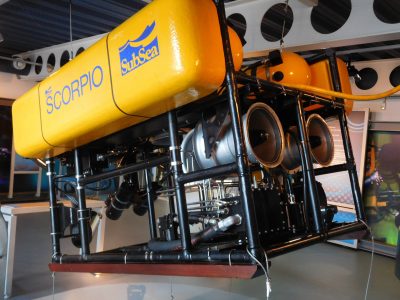
Because, as these models show, water gets heavy.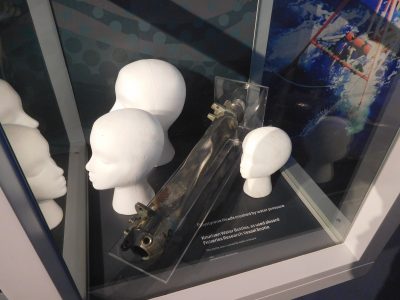
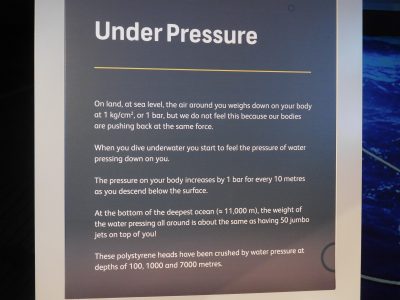
There was also a display about death in Victoria times and I found this bonnet creepy. Good for Halloween though!

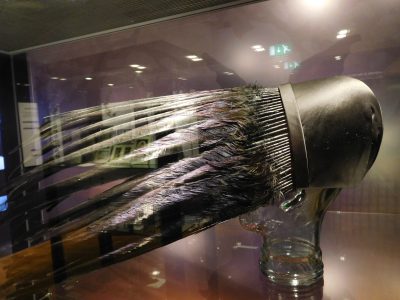
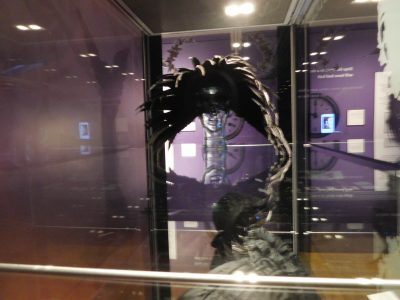
Looking out the window from the museum I noticed the the hotel next door was modeled after an oil tanker’s bow.
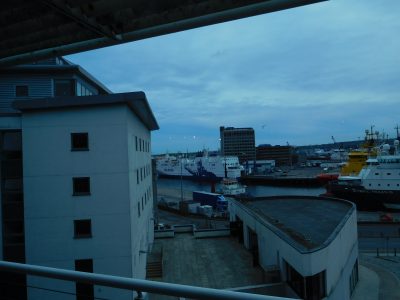
And this wee boat is the ferry to Orkney and Shetland.
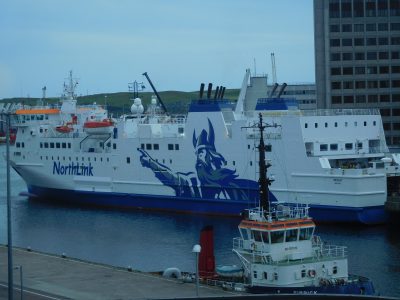
{ 0 comments… add one now }